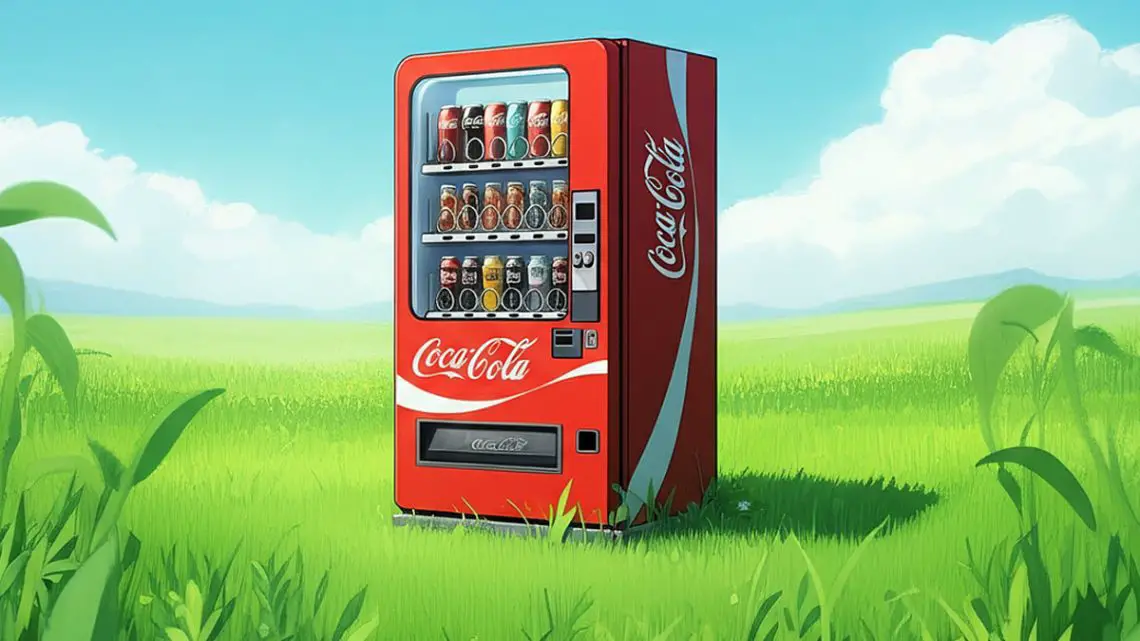
Hydrogen-Powered and Grid-Free? Coca-Cola Unveils Off-Grid Hydrogen Tech
April 1, 2025Coca-Cola Unveils Hydrogen-Powered Vending Machines, Redefining Sustainability on the Go
A New Era for Hydrogen Technology in Everyday Life
Coca-Cola has found a surprising new stage to spotlight hydrogen innovation, and it’s no factory floor or bulky industrial plant. Instead, meet the hydrogen-powered vending machine, a sleek solution that operates without a power outlet. Yes, you read that right. The humble vending machine has been reinvented, and this time, it’s running on hydrogen. It’s an application you didn’t see coming, but one that brilliantly showcases how hydrogen is inching closer to everyday life. Could this be a sneak peek at our low-carbon future?
While hydrogen tech often makes headlines for its role in fuel cells or long-haul trucking, Coca-Cola’s smart application bridges the gap between cutting-edge innovation and something as familiar as grabbing a cold drink on a hot day. And in a world that’s trying to cut emissions at every corner, the significance of this development cannot be overstated. But how does it actually work? Let’s peel back the layers of this fascinating breakthrough.
How Do Hydrogen-Powered Vending Machines Work?
At the heart of Coca-Cola’s hydrogen-powered vending machine is the marriage of cutting-edge fuel cell technology and a clever approach to energy storage. Instead of plugging into an outlet, these machines utilize compact hydrogen fuel cells, which produce electricity through a chemical reaction between hydrogen and oxygen. The byproduct? Pure water vapor. It’s refreshingly simple for technology that feels like it’s been pulled straight from the future.
Where does the hydrogen come from? Portable hydrogen cartridges act as the machine’s power source. These cartridges are designed to be easily replaceable, making the system both practical and scalable for wider rollouts. The cartridges store hydrogen in a compressed form, providing a Long-lasting energy reserve that keeps the drinks cool and the machine operational.
On the technical side, the fuel cells maintain a steady output of energy without the need for noisy generators or cumbersome external infrastructure. Combine that with energy-efficient LED lighting and advanced cooling technology, and Coca-Cola has created a machine that not only sips hydrogen but also maximizes every watt of electricity produced.
It’s not just about the hardware, though. This project is part of a larger eco-friendly push within Coca-Cola, as the company has been vocal about its commitment to sustainable innovations. Between bottle recycling initiatives and efforts to decarbonize their operations, these vending machines are another piece of the puzzle.
Why This Innovation Matters for the Hydrogen Industry
This development might feel like a small step, but it’s a meaningful one for the hydrogen space. It’s the kind of innovation that makes hydrogen technology tangible and relatable to the everyday consumer. After all, it’s easier to visualize the benefits of hydrogen when you see it keeping your soda chilled rather than hiding in a factory or a long-haul vehicle.
By tapping into vending machines, Coca-Cola is hitting an important intersection of convenience, consumer culture, and sustainability. More importantly, it’s proving that hydrogen tech is versatile beyond large-scale applications. The hope is that this could pave the way for more widespread adoption, pushing hydrogen beyond “big business” headlines and into plain sight for consumers.
Another critical factor is accessibility. Portable hydrogen cartridges reduce the dependency on an electric grid, meaning this technology could be a game-changer for vending machine operations in remote areas or regions with unreliable electricity access. It’s a win not just for sustainability but also for expanding access to refreshments in far-flung locations.
Coca-Cola is aligning with broader industry trends focused on making sustainable choices profitable. With the global vending machine market poised to grow steadily, advancements like these set a template for innovation in an otherwise static industry.
Timeline and Future Implications
The rollout of Coca-Cola’s hydrogen vending machines is in its early stages, but all signs point to them being here to stay. While the company has yet to announce an exact timeline for scaling up this initiative, the buzz around these machines suggests we could see further deployment in the near future, possibly starting with high-visibility events or environmentally focused regions.
Broader acceptance of this technology does depend on solving hydrogen’s Achilles’ heel: infrastructure. For these machines to become widespread, hydrogen-production and cartridge-distribution systems will need to scale up significantly. That said, the ease of swapping out cartridges hints at a practical solution for distributors down the line.
Looking further, Coca-Cola’s innovation could inspire other companies to rethink the power sources behind their vending operations or similar self-contained systems. Could hydrogen-powered micro-cafés or kiosks be next? If nothing else, it sets a benchmark for what small-scale applications of hydrogen technology can achieve in promoting sustainability.
Technology With a Human Touch
At the core of Coca-Cola’s vending machine innovation is a simple goal disguised in high-tech flair: making sustainability easier to swallow. By harnessing hydrogen power, the brand is offering a glimpse of what it looks like when green technology meets real-world functionality. And somehow, it’s making hydrogen seem a bit more approachable, shedding its “industrial-only” reputation.
Whether you see this as a clever marketing move or a genuine leap forward in hydrogen adoption (or maybe both), there’s no denying it’s a conversation starter. Next time you grab a cold drink, don’t just think about your thirst. Think about the technology quietly humming behind the scenes, working to make the planet a little cooler too.



 With over 15 years of reporting hydrogen news, we are your premier source for the latest updates and insights in hydrogen and renewable energy.
With over 15 years of reporting hydrogen news, we are your premier source for the latest updates and insights in hydrogen and renewable energy.